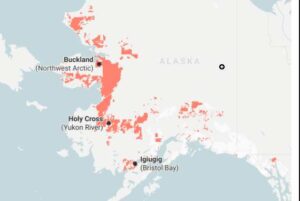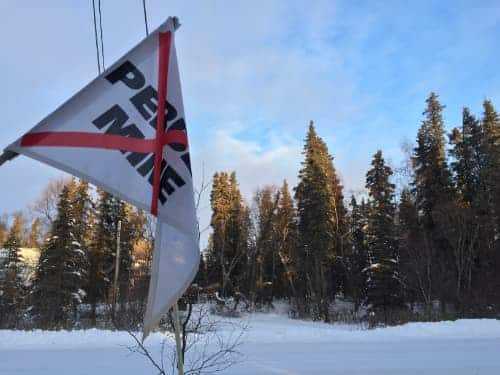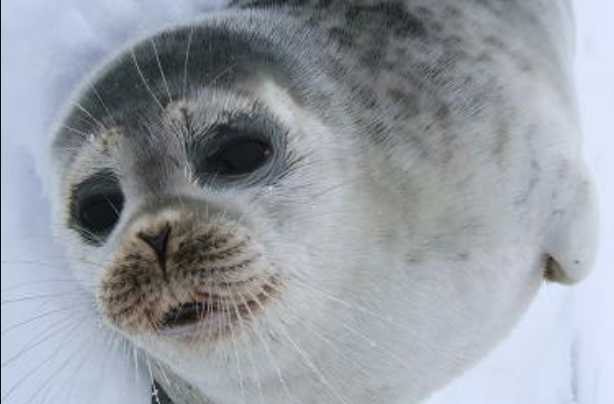
Tuesday, the US Bureau of Land Management (BLM) published the Alaska Native Claims Settlement Act 17(d)(1) Environmental Impact Statement’s Record of Decision concluding a lengthy process and finalizing the Secretary of the Interior’s decision to retain protections on all the subject 28 million acres across Alaska. These D-1 lands include BLM-managed lands in five BLM planning areas: Kobuk-Seward, Bering Sea-Western Interior, Bay, East Alaska, and Ring of Fire, which together contain critical salmon-producing watersheds, caribou calving grounds, tundra landscapes, coastal estuaries, moose habitat, and marshes important to migratory birds. These lands are important hunting, fishing, and gathering grounds for more than 100 Indigenous communities. The Bering Sea-Interior Tribal Commission and its 38 member Tribes applauds the BLM for responding to the people and Tribal communities most impacted by this decision and voices from Alaskans across the state to keep these vital protections in place.
D-1 lands are located along the Yukon and Kuskokwim Rivers and their tributaries, the fragile tundra above the Arctic Circle, the salmon-rich area of Bristol Bay and the temperate rainforest of Southeast Alaska. These lands provide significant migratory pathways and connectivity for our animals, including three of North America’s largest caribou herds; the largest gathering of bald eagles in North America; and the largest sockeye salmon run on the planet. These lands and waters, and all they sustain, are essential to us as Alaska Native people and immensely valued across Alaska.
During the environmental review process, BLM held 19 public hearings, offering an opportunity for people to voice their views about whether the D-1 protections should be maintained, modified or lifted. During all the public hearings, there was near-unanimous testimony by in-person and online attendees asking BLM to retain the D-1 protections, which prevent different forms of extractive development. Additionally, over 400,000 written comments were received by BLM with over 98% of those comments favoring retention of all the protections. Over half of the 229 Alaska Tribes wrote letters to BLM asking for retention of D-1 protections, as did 5 Alaska Resource Advisory Councils, and 4 Alaska Native Regional Corporations.
Public hearing participants from communities living closest with these D-1 lands, shared stories detailing a litany of current severe stresses and impacts from climate change, including declining caribou herd populations, a five-year salmon crash on the Yukon and Kuskokwim Rivers in which communities have been prohibited from fishing, longer periods of ice-free seas, warming river temperatures, and rising ocean levels that are impacting salmon spawning. With these existing stresses, community members testified that adding the stress of extractive development—that would be allowed by lifting the D-1 protections—would cause grave impacts to the customary and traditional ways of life of the Tribal communities living closest with these lands.
In Alaska, we are experiencing profound change and loss with a rapidly warming climate. We are witnessing bird and marine mammal die-offs, a crash in our fish populations and major changes in the migration of many of our key species. We are living with daily and seasonally compounding impacts from increased extreme weather and abrupt disruptions. In September 2022 we experienced our first typhoon, Typhoon Merbok in Western Alaska; we lost freezers full of wild meat in our villages that were hard hit with flooding, extreme winds, and loss of power. To allow industrial development at a time of such incredible stress would magnify and lead to further loss of our fish, birds, wildlife and their habitats. The Biden administration’s steps toward retaining D-1 protections is critical in supporting the health of our traditional lands and the life they sustain.
This decision is not only in the public interest but intrinsic to our survival as Indigenous People of Alaska. ”These lands currently sustain our communities and have supported our people for generations. It is our obligation to do what is in our power to protect them. I want to thank the Bureau of Land Management for protecting our traditional lands and our way of life for our children, grandchildren, and those still to come,” said Eugene Paul, Chairman of the Bering Sea Interior Tribal Commission. The thirty-eight Tribes of the Bering Sea Interior Tribal Commission deeply thank the Bureau of Land Management and the Secretary of the Interior for listening to Alaska Native peoples in this decision.
[content id=”79272″]







